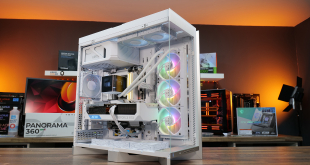“There's never a good time to have a problem, but if you're going to experience an issue then at the start of a transition is as good a time as ever”. That's Intel's opinion. But is it realistic? KitGuru investigates.
Intel's experienced very few problems during its existence. To be honest, there have been weeks where KitGuru has returned more products to Marks & Spencer than Intel has had to take back. In that environment, the shocking announcement that Intel was going to have to re-engineer the Sandy Bridge chipset was a surprise for everyone.

OK, so there are a million points in the life of a product where it could experience serious issues/warrant a recall – let's examine them.
End of life
Expression used in the industry for a product that's being superseded. A recall here would mean that millions of customers affected, phenomenal expense and a hit to your bottom line profit that's hard to recover from.
Mass Production
Bad news, but not as bad as it would be when you are end of life. The biggest problem here is that your production lines stop. With Intel and AMD this is less of a problem than, say, nVidia versus ATI in the old days. When the two companies are evenly matched, there can be a huge movement from one side to the other. For example, when nVidia hit the market ahead of ATI on DX10 and ATI/AMD returned the favour with DX11. The immediate cost of a problem when you are in mass production is big – but more importantly it can hand huge initiative to your competitors.
Launch
Right now, the smaller companies have all moved hard to Sandy Bridge, but the majors like Acer and HP were all struggling with inventory issues dating back to the first major impact from the iPad and last summer. While everyone was running down the old stock, Intel was forced to hold fire on releasing the new Core i3 processors into the mass market. Instead, the launch centred on sampling for the Core i5 2500 and Core i7 2600.

Where is the problem and how big is it?
The problem is not with the CPU design, just the chipset and there are not that many products out there, with customers, to recall. For companies like Gigabyte, Asus and MSI the total UK stock of unsold Sandy Bridge chipset mainboards might be less than 10,000 each. Might sound like a lot, but there will be a ‘switch sell' in the high street to existing Intel Core products running on the older mainboards – possibly with huge reductions in price – while the new batches are prepared. In effect, Sandy Bridge has been pushed back to a CeBIT launch time frame.
For the major vendors like Samsung, it is a much bigger pain in the arse. As reported earlier on KitGuru, the Korean electronics giant has stepped straight to the front of ‘everybody's favourite company list' by offering immediate, no-quibble refunds. Great work Samsung!

The channel will be a little dry for a while, but Intel execs will be thanking their own personal gods that this happened at launch, just after Christmas. Maximum pain here will be, according to Intel, around $700m.
If Sandy Bridge suffered a total recall, just before Christmas, after being in the market for a year of two – then the cost would have been off the charts.
KitGuru says: Intel has made full disclosure of its design flaws. There will be pain, but they know how much already and have the funds to cover it. The loss of confidence will be real, but hard to measure over the next 6-12 months. The real question is, can AMD's engineering, sales and marketing teams capitalise on this rare mistake to gain market share in Q1/Q2 ?
Comment below or in the KitGuru forum.
 KitGuru KitGuru.net – Tech News | Hardware News | Hardware Reviews | IOS | Mobile | Gaming | Graphics Cards
KitGuru KitGuru.net – Tech News | Hardware News | Hardware Reviews | IOS | Mobile | Gaming | Graphics Cards



If they can afford to pay 8 billion for mcafee, this is just a little bit of pocketchange.
They say its going to cost them what? 1 billion dollars? yeah wont even slow them down, its lunch money.
Only thing that is harmful is the technology cock up and damaged faith in the company.